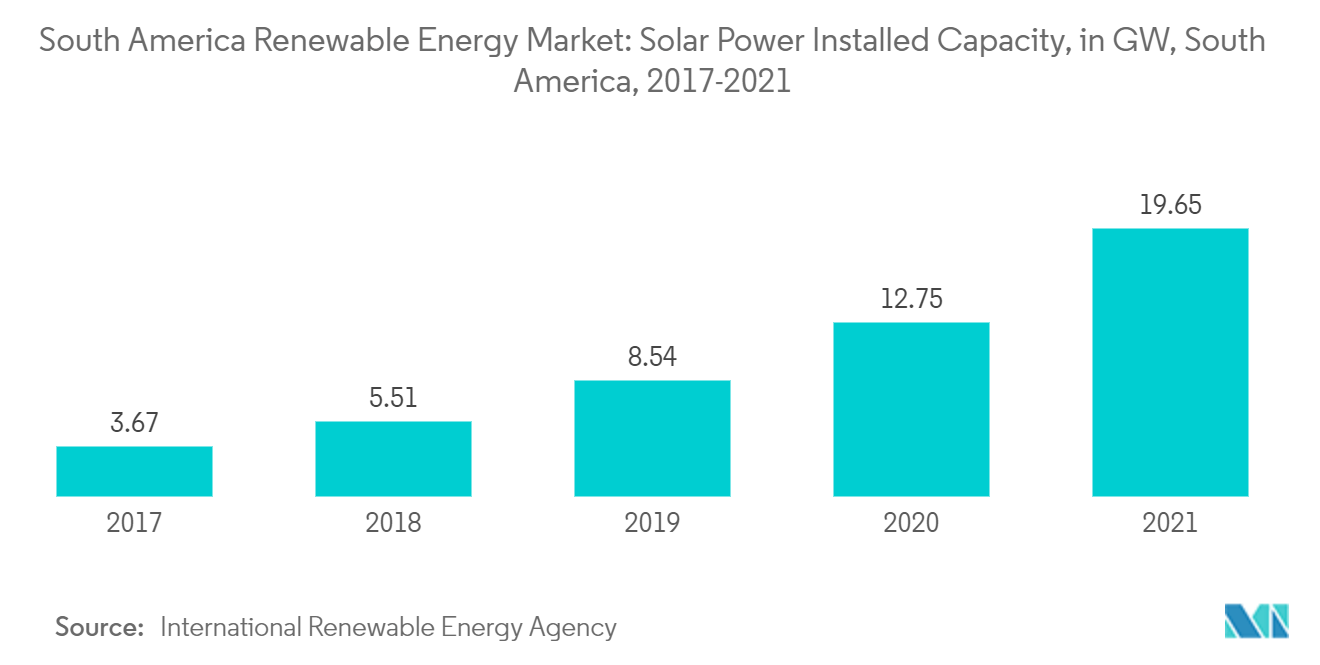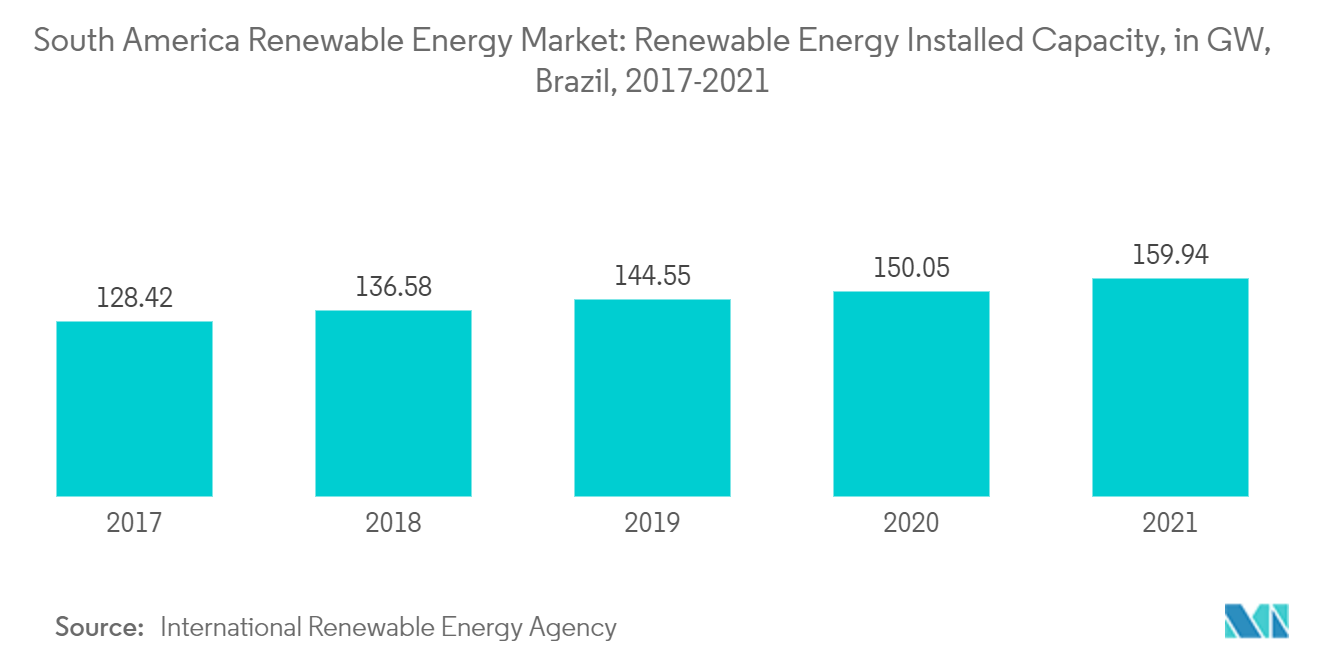Market Trends of South America Renewable Energy Industry
Solar Energy is Expected to Witness Significant Growth
- South America witnessed a significant jump in its total installed solar capacity, which went up to 19.65 GW in 2021 from 3.67 GW in 2017. Brazil and Chile are the major contributors to the region's increased solar capacity.
- Brazil will hold 13.05 GW of solar installed capacity in 2021. In Chile, the installed solar capacity was 4.47 GW in 2021. Argentina, on the other hand, produces a small amount of solar energy, with an installed capacity of 1.07 GW in 2021.
- Brazil's solar energy market is rising due to the increasing demand for electricity. Furthermore, the falling costs of solar power modules, coupled with government initiatives to increase renewable shares in the total energy mix, are driving the solar power market in the country.
- Furthermore, due to abundant resource endowment and enabling solid policies, South America's solar energy capacity alone is expected to grow by a factor of 40 by 2050 to more than 280 GW.
In December 2022, Equinor reached a final investment decision on the 531 MW Mendubim solar project in Rio Grande do Norte, Brazil. The project is a joint venture between Scatec, Hydro Rein, and Equinor and is being built at an estimated investment of USD 431 million. The three companies will jointly provide project engineering, procurement, and construction services. Scatec and Equinor have agreed to offer asset management services, as well as operation and maintenance services, for the solar facility.
Brazil is Expected to Dominate in the market
- With a total installed capacity of 159.94 GW in 2021, Brazil is South America's top renewable energy-producing country. The country generates more than 68% of its renewable energy from hydropower facilities. Its total hydropower capacity was 109.42 GW in 2021.
- The country is home to some of the world's largest hydropower facilities, including the 14 GW Itaipu hydroelectric project, which it jointly owns with Paraguay. The Belo Monte hydropower plant is expected to cost USD 18.5 billion.
- Brazil has also led to the growth of wind energy in South America over the past decade. In 2021, the country had a total wind energy capacity of 21,16 GW, which was more than 71% of the total capacity of the region.
- Solar power in the country has also witnessed significant growth, with the capacity increasing to 13.05 GW in 2021. Bioenergy is also a significant contributor to Brazil's total renewable energy capacity. In 2021, the country's total capacity for this power form was 16.3 GW.
- During the forecast period, renewable energy projects in Brazil are expected to lead the market because of the projects that are coming up and the ones that are already being built.




